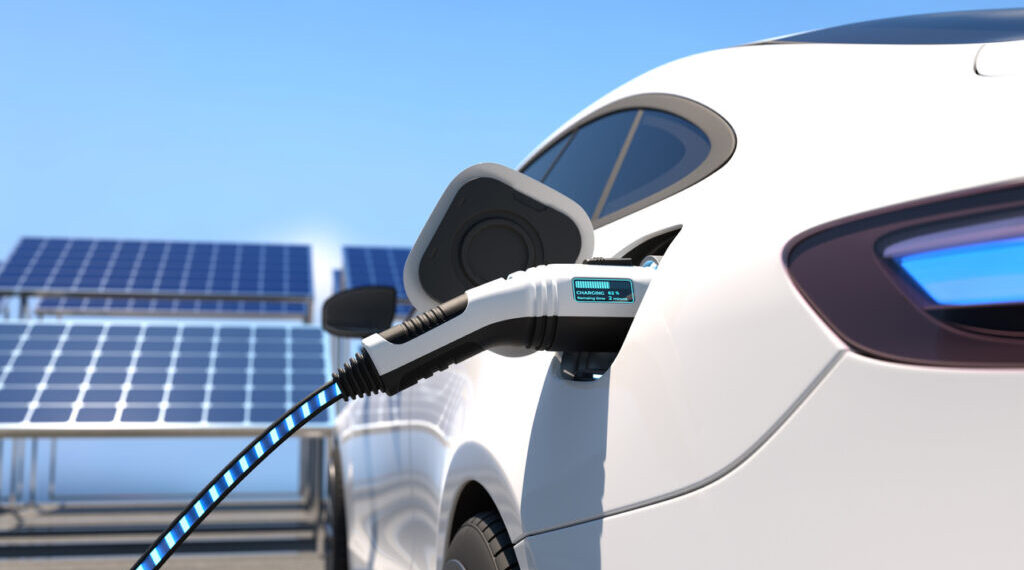Understanding the Different Types of New Energy Vehicles
New Energy Vehicles (NEVs) represent a significant shift in the automotive industry, aiming to reduce emissions and promote sustainable transportation. Understanding the various types of NEVs is crucial for consumers and policymakers alike.
1. Battery Electric Vehicles (BEVs)
Battery Electric Vehicles (BEVs) are powered solely by electricity stored in a battery pack, which is recharged by plugging into an external power source. BEVs produce zero tailpipe emissions, contributing to cleaner air quality. The range of BEVs varies depending on the battery capacity and vehicle efficiency, with newer models offering ranges exceeding 300 miles on a single charge. For example, Tesla’s Model 3 Long Range offers an EPA-estimated range of 333 miles. The upfront cost of BEVs can be higher compared to traditional gasoline cars, but they typically have lower operating costs due to cheaper electricity compared to gasoline and reduced maintenance needs.
2. Plug-in Hybrid Electric Vehicles (PHEVs)
Plug-in Hybrid Electric Vehicles (PHEVs) combine an internal combustion engine with an electric motor and a battery pack. PHEVs can be driven on electric power alone for a certain range, typically between 20 and 50 miles, after which the gasoline engine kicks in. This dual-power system offers flexibility, allowing drivers to use electric power for daily commutes and gasoline for longer trips. PHEVs can be recharged from an external power source, like BEVs. They offer a balance between electric driving and the convenience of a gasoline engine, making them a popular choice for those hesitant to fully commit to electric vehicles.
3. Hybrid Electric Vehicles (HEVs)
Hybrid Electric Vehicles (HEVs) also combine an internal combustion engine with an electric motor, but unlike PHEVs, they cannot be plugged in to recharge. The battery is charged through regenerative braking and by the engine itself. HEVs primarily rely on the gasoline engine, with the electric motor assisting to improve fuel efficiency. HEVs offer better fuel economy compared to traditional gasoline cars, but they do not provide the option of driving solely on electric power for extended periods. They are a good option for those seeking improved fuel efficiency without the need for charging infrastructure.
4. Fuel Cell Electric Vehicles (FCEVs)
Fuel Cell Electric Vehicles (FCEVs) use hydrogen gas to generate electricity, which then powers an electric motor. The only emission from FCEVs is water vapor, making them a zero-emission vehicle. FCEVs offer similar refueling times to gasoline cars, but the limited availability of hydrogen refueling stations remains a significant challenge. Current FCEV models, such as the Toyota Mirai and Hyundai Nexo, offer a range of over 300 miles on a full tank of hydrogen. The development of hydrogen infrastructure is crucial for the widespread adoption of FCEVs.
The Role of Battery Technology in Advancing Electric Mobility
Battery technology is at the heart of electric vehicle (EV) advancement, shaping their performance, range, and affordability, and ultimately influencing the widespread adoption of electric mobility. Improved batteries are crucial for EVs to compete effectively with traditional gasoline-powered cars.
1. Energy Density and Range
A primary focus in battery technology is increasing energy density. Higher energy density means batteries can store more energy for their size and weight, directly translating to longer driving ranges for EVs. This addresses a key concern for potential buyers: range anxiety. Innovations in cathode and anode materials, such as nickel-rich cathodes and silicon anodes, are contributing to significant gains in energy density. For example, solid-state batteries, still under development, promise even higher energy densities compared to current lithium-ion batteries.
2. Charging Speed and Infrastructure
Faster charging speeds are essential for making EVs more convenient. Advancements in battery chemistry and thermal management systems are enabling EVs to charge more quickly without degrading battery life. The development of high-power charging infrastructure is also crucial. As charging times decrease, EVs become a more practical option for daily commutes and long-distance travel. Companies are investing heavily in both battery technology and charging infrastructure to accelerate EV adoption.
3. Battery Lifespan and Durability
The lifespan and durability of EV batteries are critical for long-term ownership costs and sustainability. Research is focused on improving battery management systems (BMS) to optimize charging and discharging cycles, thereby extending battery life. Furthermore, new battery designs are incorporating more robust materials and construction techniques to withstand extreme temperatures and driving conditions. Longer battery lifespans reduce the need for replacements, making EVs more economically attractive.
4. Cost Reduction
Reducing the cost of batteries is essential for making EVs more affordable and accessible to a wider consumer base. Innovations in manufacturing processes, economies of scale, and the use of cheaper raw materials are driving down battery costs. The cost of battery packs has decreased significantly over the past decade, and this trend is expected to continue. Lower battery costs will make EVs more competitive with gasoline-powered vehicles, accelerating the transition to electric mobility.
Infrastructure Challenges: Expanding Charging and Hydrogen Stations
The widespread adoption of new energy vehicles (NEVs) hinges significantly on the availability of robust and accessible infrastructure. Overcoming these challenges is crucial for a seamless transition to sustainable transportation.
1. Addressing Charging Station Availability
One of the primary obstacles is the limited number of charging stations, particularly in rural areas and apartment complexes. Expanding the charging infrastructure requires significant investment and strategic planning. Governments and private companies must collaborate to deploy charging stations in convenient and accessible locations, ensuring that NEV owners can easily recharge their vehicles. This includes fast-charging options along highways and public charging points in urban centers.
2. Overcoming Hydrogen Station Scarcity
The development of hydrogen refueling stations lags significantly behind that of charging stations. The high cost of building and maintaining hydrogen infrastructure presents a major hurdle. Increased investment, technological advancements, and supportive policies are essential to establish a viable hydrogen refueling network. This involves addressing safety concerns, improving hydrogen production methods, and reducing the cost of hydrogen fuel.
3. Standardizing Charging Protocols
The lack of standardized charging protocols and connectors can create compatibility issues for NEV owners. Different charging standards across regions and vehicle manufacturers can lead to confusion and inconvenience. Establishing universal charging standards would streamline the charging process and enhance the user experience. This includes harmonizing charging connectors, communication protocols, and payment systems.
4. Enhancing Grid Capacity and Reliability
The increased demand for electricity from NEVs can strain existing power grids, particularly during peak hours. Upgrading grid infrastructure and implementing smart charging solutions are crucial to ensure a reliable and stable power supply. This involves investing in grid modernization, deploying energy storage systems, and promoting off-peak charging. Smart charging technologies can optimize energy consumption and minimize the impact on the grid.
Energy Recovery Systems: Enhancing Efficiency in Modern Vehicles
Energy recovery systems in modern vehicles capture and reuse energy that would otherwise be lost, boosting overall efficiency and reducing environmental impact. These systems are becoming increasingly important as manufacturers strive to meet stricter emissions standards.
1. Regenerative Braking Systems
Regenerative braking is a key technology in electric vehicles (EVs) and hybrid electric vehicles (HEVs). Instead of using friction to slow down, the motor acts as a generator, converting kinetic energy back into electrical energy. This energy is then stored in the battery for later use, effectively increasing the vehicle’s range and reducing wear on traditional brake components.
2. Exhaust Heat Recovery
Exhaust heat recovery systems capture waste heat from the engine’s exhaust gases. This heat can be used to warm up the engine more quickly, reducing cold-start emissions and improving fuel efficiency. Some advanced systems use this heat to generate electricity through thermoelectric generators, further enhancing energy recovery.
3. Kinetic Energy Recovery Systems (KERS)
KERS, originally developed for Formula 1 racing, captures the kinetic energy generated during braking and stores it for later use. While not as widely adopted in mainstream vehicles, KERS demonstrates the potential for recovering significant amounts of energy. Future advancements may lead to more widespread implementation in high-performance and luxury vehicles.
Q&A
Question 1: What are the main types of New Energy Vehicles (NEVs) discussed in the provided text, and what are their key characteristics?
Answer: The text outlines four main types of NEVs: Battery Electric Vehicles (BEVs), which run solely on electricity from a rechargeable battery; Plug-in Hybrid Electric Vehicles (PHEVs), combining a gasoline engine with an electric motor and rechargeable battery; Hybrid Electric Vehicles (HEVs), also combining gasoline and electric power but without a plug-in charging capability; and Fuel Cell Electric Vehicles (FCEVs), using hydrogen fuel cells to generate electricity. Each type offers a different balance between range, refueling/charging convenience, and environmental impact.
Question 2: What are the key factors driving advancements in battery technology for electric vehicles, and what are the projected improvements in battery performance by 2025?
Answer: Advancements in battery technology are focused on increasing energy density for longer range, faster charging speeds for improved convenience, enhanced lifespan and durability for reduced long-term costs, and cost reduction for wider accessibility. BloombergNEF projects a decrease in battery pack cost to $132/kWh and an increase in energy density to 290 Wh/kg by 2025, along with faster charging times (0-80% in 20 minutes).
Question 3: What are the major infrastructure challenges hindering the widespread adoption of NEVs, and how can these challenges be addressed?
Answer: Major challenges include limited charging station availability (especially in rural areas), a scarcity of hydrogen refueling stations for FCEVs, a lack of standardized charging protocols, and the potential strain on existing power grids. Solutions involve increased investment in charging and hydrogen infrastructure, strategic planning for station placement, development of universal charging standards, and grid modernization along with smart charging technologies.
Question 4: How do energy recovery systems contribute to improved vehicle efficiency, and what are some examples of these systems?
Answer: Energy recovery systems capture and reuse energy that would otherwise be lost, enhancing efficiency and reducing environmental impact. Examples include regenerative braking (converting kinetic energy to electricity during braking), exhaust heat recovery (using waste heat to warm the engine or generate electricity), and Kinetic Energy Recovery Systems (KERS) which store braking energy for later use.
References:
- https://www.utilitydive.com/news/us-electric-vehicle-sales-are-slowing-amid-policy-shifts-bnef/751079/
- https://about.bnef.com/insights/clean-transport/global-electric-vehicle-sales-set-for-record-breaking-year-even-as-us-market-slows-sharply-bloombergnef-finds/
- https://www.caranddriver.com/news/g64540955/bestselling-evs-2025/
- https://about.bnef.com/insights/clean-transport/electric-vehicle-outlook/
- https://www.coxautoinc.com/market-insights/q2-2025-ev-sales/






